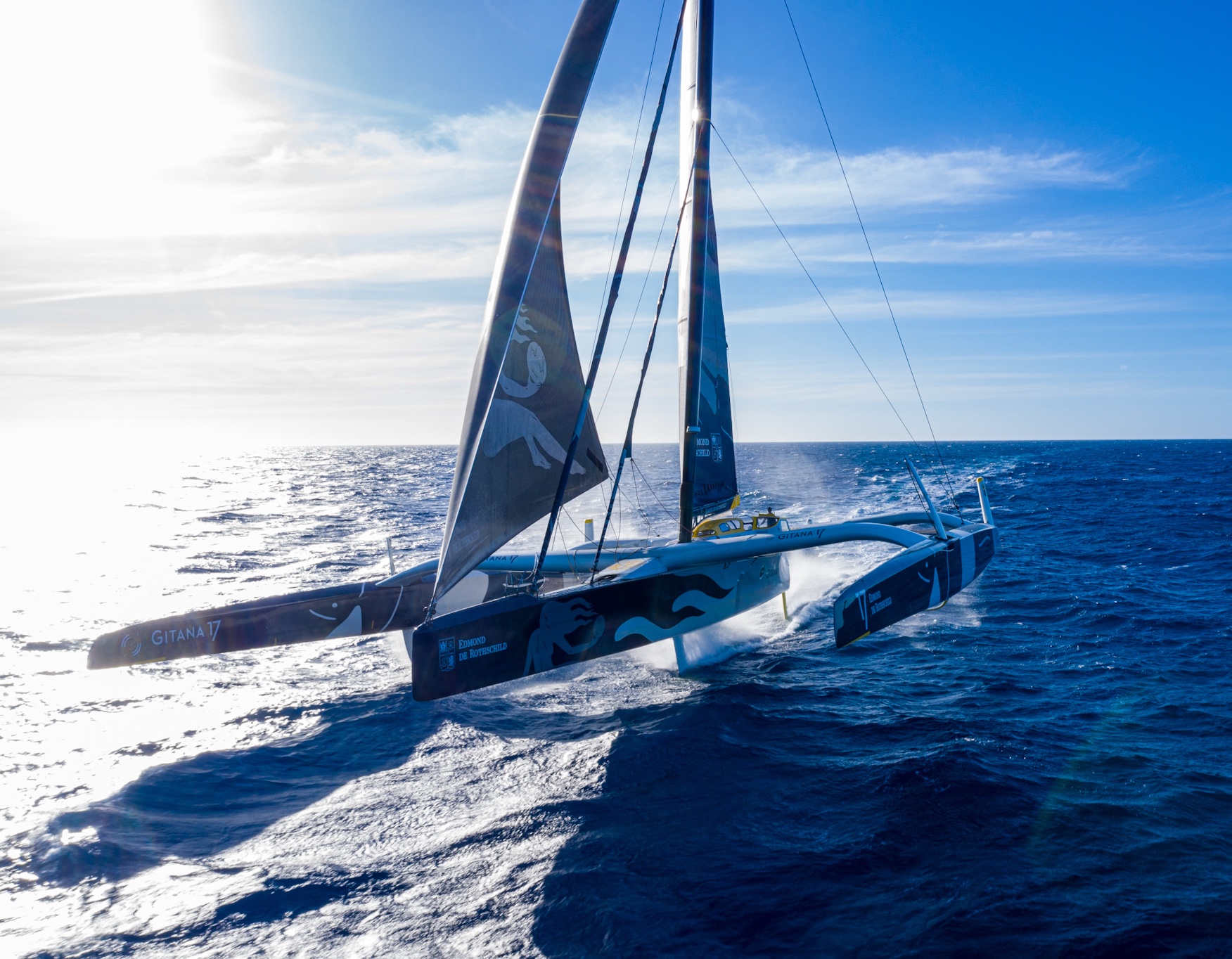

For the past 24 hours, since they made a perfectly controlled turn to the east offshore of Brazil, the men of the Maxi Edmond de Rothschild have clearly been lengthening their stride. Constantly making over 30 knots, often stretching to close to 35-40 knots, the six sailors are ticking off the miles at very high speed, increasing their lead over Francis Joyon’s record in the process. They were 732 miles in credit at the 07:00 UTC position report, compared with 442 miles at the same time yesterday. However, today’s the day when the atmosphere and the setting will really change aboard. The big blue skies will likely give way to moderate conditions ahead of the front and the T-shirts and shorts the crew were still wearing on deck yesterday afternoon will likely be consigned to their bags for a while.

The pureness of the trajectory
Since exiting the doldrums on Friday, the trajectory of the latest Gitana has been crystal-clear and it’s worth congratulating the work of Gitana Team’s weather cell for this vision, starting with Marcel van Triest, the router of the five-arrow stable. From his Mediterranean HQ, he has managed to hit the nail on the head! On setting sail from Ushant at the trailing edge of a weather slot more than a week ago, the Dutchman had a very clear image in his mind of the connection the Maxi Edmond de Rothschild needed to make yesterday. The teamwork required to achieve this was fantastic as it was important to stick closely to the polars of the 32-metre giant and line themselves up with a string of weather systems as the theory envisaged.
“It was important not to arrive in the south too early otherwise we’d have had to hang around at the station waiting for the train of depressions. In this case, I’d say that we managed to really nail the timing in terms of this transition. We had this pattern in mind and it’s great when things go according to plan!” admitted Marcel van Triest, a twinkle in his eye.
Strong wind for entering the 40th parallel
“The wind will lift considerably as we bend eastwards and we’ll end up on a downwind point of sail by the end of the day,” explained Franck Cammas yesterday. “Next, the wind will pick up considerably as far as South Africa. The visibility will change ahead of the front, even though the sea state will remain fine for quite a long time, which will enable us to post some very fine average speeds by exploiting the boat’s true potential. We’re flat out and we need to be to tackle this section. The next few days are all about striking a balance. We mustn’t be too quick or too slow to keep nicely ahead of the front. We must remain in a sector where the wind strength and direction is right. To achieve this, we need to constantly adjust the Maxi’s speed and course according to the speed and direction of the front, which is propelling us towards the Southern Ocean.”
This section of the Jules Verne Trophy course is known for providing teams with the opportunity to secure another record, that of 24 hours! Here, the team seem to have all the ingredients right now in the South Atlantic, between Rio de Janeiro and Cape Town, but the skippers of the Maxi Edmond de Rothschild remain clear about their strategy, as Franck Cammas points out: “It’s tempting to get carried away by the speed and performance the boat is more than capable of, but we’re only at the start of our round the world and we need to think about the bigger picture for the Maxi Edmond de Rothschild. The 24-hour record is not our primary objective, our eyes are on the Jules Verne Trophy.”
The crewed 24-hour distance record has been held since 1 August 2009 by Pascal Bidégorry and the men of Banque Populaire V. This was achieved during a North Atlantic record attempt and they covered 908.2 miles at an average speed of 37.84 knots; a fabulous time which still stands today even though it has been under threat on several occasions since.